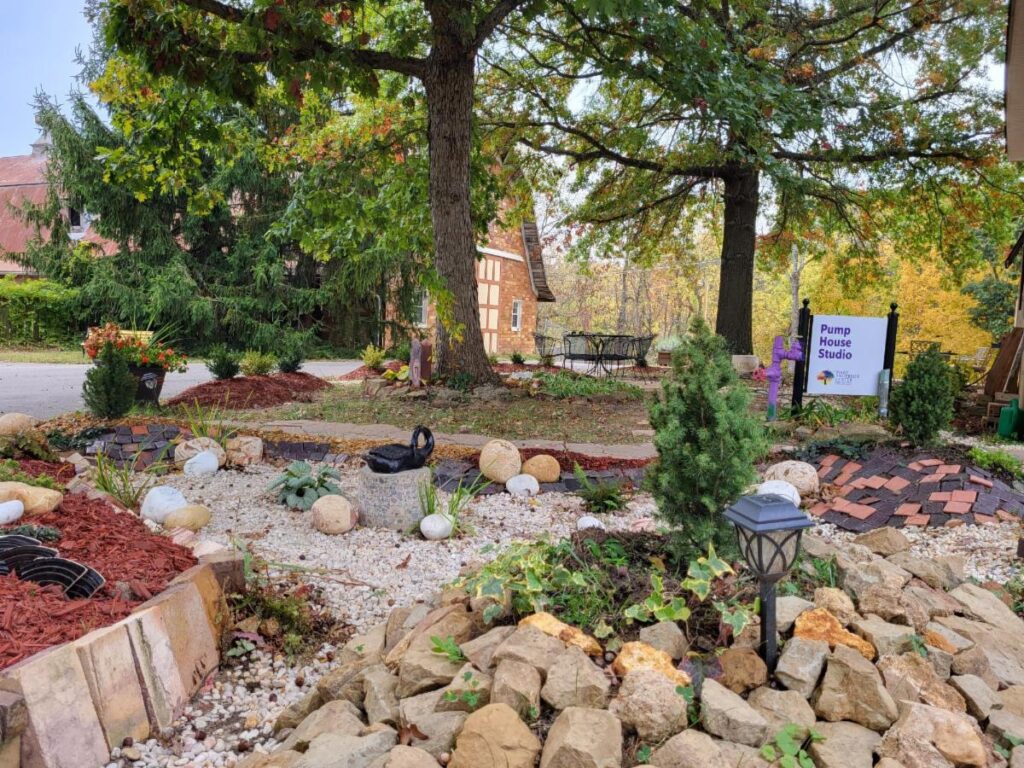
Rain Gardens – For Beauty and Function
by friar Vincent Petersen, OFM Conv.
In these times of increasing droughts, floods, and unpredictable climate changes, rain gardens can help to alleviate flooding, recharge the groundwater supply and add to the beauty of a yard. At Mount Saint Francis we have not only added to the beauty of the new Friendship Garden next to the Pump House Studio but also created a small reservoir to capture the rainwater which flows off of the parking lot. This serves a number of purposes: to help alleviate the flooding which occurs in front of the gallery after every rainstorm; to temporarily store much of the runoff water and give it time to percolate down into the subsoil, and to add to the garden landscape an artistic flair. Another feature of the rain garden functions as a filter for pollutants which come from the parking lot. This helps to reduce harmful contaminants which harm the natural environment.
Water-loving plants such as ferns, Iris, and hydrangea were planted in the basin of the garden to help absorb excess water. Small conifer trees, a juniper bush, and sedum line the small ridges to help protect against erosion, and decorative stones, tiles, and broken pottery donated by our art students were also added to the project to help give it more eye appeal. Such a project brings together both earth care and art expression.
The creation of a rain garden is relatively simple and can be a fun community-building and family activity. It is important though to follow certain guidelines so that the rainwater does not sit for very long in the basin which would attract mosquitos and stagnant water. A good time to know where to place the channels is during a rainstorm. Observing how the water naturally flows will help in your overall design. Instructions on how to build your own can be found at your local library, garden center or on-line.






